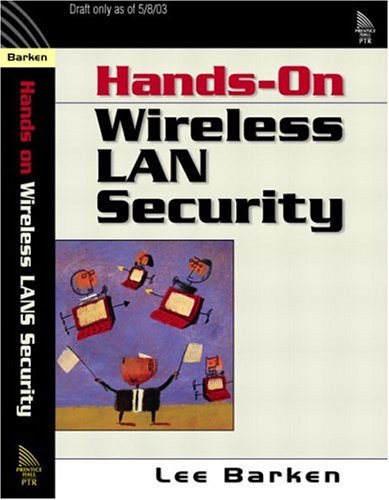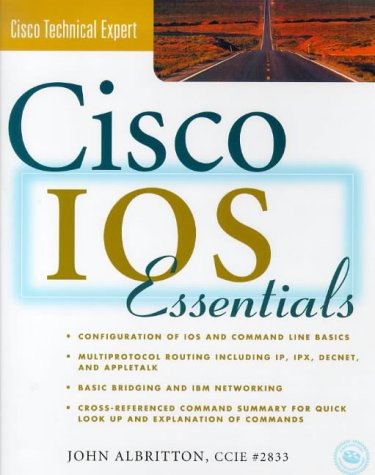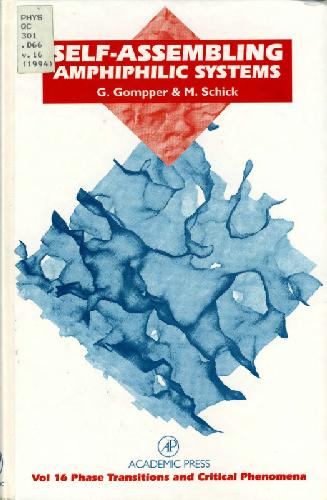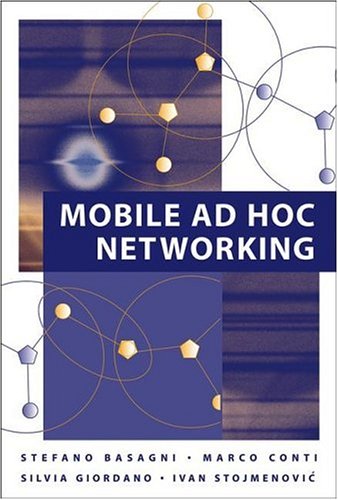Jeffrey Bannister, Paul Mather, Sebastian Coope9780470860915, 047086091X
Table of contents :
Team DDU……Page 1
Contents……Page 8
About the Authors……Page 20
1.1 Background to Convergence……Page 24
1.2 Third Generation (3G)……Page 25
1.3 Why UMTS?……Page 26
1.4 IMT2000 Process……Page 27
1.5 Organization of the Book……Page 31
2.1 Circuit- and Packet Switched Data……Page 34
2.1.2 Virtual Circuits……Page 35
2.2.1 Representing Analogue Signals in Digital Format……Page 37
2.3.1 Sampling……Page 38
2.3.2 Coding and CODECs……Page 39
2.3.4 Compression……Page 42
2.3.6 Packetization Delay……Page 43
2.3.8 Voice over IP (VoIP)……Page 44
2.3.9 Quality of Service……Page 45
2.5 Frequency Division Multiple Access (FDMA)……Page 46
2.6 Time Division Multiple Access (TDMA)……Page 47
2.7 Code Division Multiple Access (CDMA)……Page 49
2.7.1 DS-CDMA Signal Spreading……Page 50
2.7.2 Orthogonal Codes and Signal Separation……Page 54
2.7.3 PN Sequences……Page 56
2.8 Multipath Propagation and Diversity……Page 58
2.8.2 Fading and Power Control……Page 61
2.9 Protecting the Data……Page 62
2.9.1 Convolution Coding……Page 63
2.9.2 Interleaving……Page 64
2.10 Summary……Page 65
3 GSM Fundamentals……Page 66
3.1 General Architecture……Page 67
3.2 Mobility Management……Page 72
3.3 GSM Air Interface……Page 75
3.3.1 GSM Multiframes……Page 78
3.3.2 Traffic Channel Multiframe……Page 79
3.3.3 Control Channel Multiframe……Page 81
3.3.4 Frames, Multiframes, Superframes and Hyperframes……Page 83
3.5 Initial Connection Procedure……Page 86
3.6 Protocols and Signalling……Page 88
3.7 GSM and Signalling System 7……Page 91
3.7.1 Signalling Points……Page 92
3.7.2 Protocol Stack for SS7 Signalling over MTP……Page 93
3.7.4 Example of Routing of a Call to a Mobile Subscriber……Page 96
3.7.5 Example of Routing of an SMS Message to a Mobile Subscriber……Page 98
3.8 Summary……Page 99
4.1 Introduction to GPRS……Page 102
4.2 General Architecture……Page 104
4.3.2 Gateway GPRS Support Node (GGSN)……Page 105
4.3.6 Border Gateway (BG)……Page 106
4.4 Network Interfaces……Page 107
4.5 GPRS Air Interface……Page 109
4.5.1 Resource Sharing……Page 110
4.5.2 Air Interface Coding Schemes……Page 112
4.5.3 Classes of Devices……Page 113
4.5.4 Advantages of GPRS Over the Air……Page 115
4.6 GPRS Protocols……Page 116
4.6.1 Physical and Logical Channels……Page 118
4.6.2 Subnetwork-Dependent Convergence Protocol (SNDCP)……Page 121
4.6.3 Logical Link Control (LLC)……Page 123
4.6.4 Radio Link Control/Media Access Control (RLC/MAC)……Page 129
4.6.5 GPRS Radio Protocol……Page 140
4.6.6 Layer 1……Page 141
4.7.2 Frame Relay……Page 142
4.7.3 Base Station System GPRS Protocol (BSSGP)……Page 143
4.8 GPRS Tunnelling Protocol (GTP)……Page 149
4.9 Connection Management……Page 151
4.9.1 Mobility Management……Page 152
4.9.2 Session Management……Page 158
4.9.4 Access Point Name (APN)……Page 165
4.9.5 Charging and Billing……Page 168
4.9.6 QoS over the GPRS Network……Page 169
4.10 Connection scenarios……Page 173
4.11.2 Enhanced Data Rates for Global Evolution (EDGE)……Page 175
4.11.3 Modification to RLC/MAC……Page 177
4.11.4 Channel Coding for PDTCH……Page 181
4.11.5 Link Adaptation and Incremental Redundancy……Page 182
4.11.6 Compact EDGE……Page 184
4.11.7 GSM/EDGE Radio Access Network (GERAN)……Page 185
4.12 Summary……Page 188
5.1 Introduction……Page 190
5.2 IP Protocol Suite Overview……Page 191
5.2.1 IP Protocol……Page 192
5.2.2 IP Addressing and Routing……Page 193
5.2.3 Address Depletion and CIDR……Page 195
5.2.4 Transmission Control Protocol (TCP)……Page 197
5.2.5 User Datagram Protocol (UDP)……Page 199
5.2.6 Domain Name Service (DNS)……Page 200
5.2.7 Address Resolution Protocol (ARP)……Page 201
5.3 IP Routing……Page 203
5.3.2 Distance Vector Routing Protocol……Page 205
5.3.3 Link State Protocols……Page 209
5.3.4 Other Routing Protocols……Page 217
5.3.5 Exterior Routing Protocols……Page 218
5.4.1 Slow Start/Congestion Avoidance……Page 220
5.4.2 Fast Retransmit/Fast Recovery (RENO TCP)……Page 221
5.4.4 Random Early Detection (RED)……Page 222
5.5 TCP Optimization for the Air……Page 223
5.6 IP for GPRS and UMTS R99……Page 224
5.6.1 Reliability and Virtual Router Redundancy Protocol (VRRP)……Page 226
5.6.3 IP Header Compression……Page 229
5.6.5 Dynamic Host Configuration Protocol (DHCP)……Page 233
5.6.6 Network Address Translation (NAT)……Page 234
5.7.1 QoS Negotiation in UMTS……Page 236
5.7.2 GPRS QoS Parameters……Page 237
5.8 QoS for the GPRS Core Network……Page 238
5.8.1 Differentiated Services (DiffServ)……Page 240
5.8.2 Expedited Forwarding……Page 241
5.8.3 QoS and the Integrated Services (IntServ)……Page 243
5.8.4 Resource Reservation Protocol (RSVP)……Page 244
5.8.5 RSVP for GPRS……Page 247
5.8.6 IntServ versus DiffServ……Page 248
5.9.1 Transport Layer Security (TLS) and WAP Security (WTLS)……Page 249
5.9.2 Virtual Private Networks and IP Security (IPSec)……Page 253
5.9.4 Security and GPRS……Page 259
5.10 Internet Protocol Version 6 (IPv6)……Page 260
5.10.1 The IPv6 Header……Page 261
5.10.2 Traffic Classes……Page 262
5.10.6 The Hop Limit……Page 263
5.10.8 The Destination Address……Page 264
5.10.9 IPv6 Address Representation……Page 265
5.10.11 Dual IP Layer……Page 266
5.10.12 Tunnelling……Page 267
5.11 Serial Line IP (SLIP) and Point-to-Point Protocol (PPP)……Page 268
5.11.1 LCP Link Establishment……Page 269
5.11.2 PPP Authentication……Page 271
5.11.3 Network Control Protocol (NCP) for IP……Page 272
5.11.5 PPP in 3G……Page 273
5.12 Radius Accounting, Authorization and Authentication (AAA)……Page 274
5.12.2 RADIUS Authentication and Configuration……Page 275
5.13 Diameter AAA……Page 276
5.13.1 Attribute Value Pairs (AVPs)……Page 277
5.14.1 Mobile IP Routing……Page 278
5.14.4 Route Optimization……Page 280
5.14.5 Mobile IP for IPv6……Page 281
5.14.6 Foreign Agent Handover and Mobile IP……Page 282
5.14.8 Mobile IP for UMTS……Page 283
5.15 Summary……Page 284
6.1 UMTS Network Architecture……Page 288
6.1.1 WCDMA Base Station (WBTS)……Page 289
6.1.3 3G Mobile Switching Centre (3G MSC)……Page 290
6.2 Network Evolution……Page 291
6.3 UMTS FDD and TDD……Page 292
6.4 UMTS Bearer Model……Page 293
6.5 UMTS QoS Classes……Page 296
6.6 UTRAN Channels……Page 299
6.6.1 Logical Channels……Page 300
6.6.2 Downlink Transport and Physical Channels……Page 301
6.7.1 Admission Control……Page 302
6.7.2 Packet Scheduler……Page 304
6.7.4 Handover Control……Page 305
6.7.5 Power Control……Page 309
6.8 WCDMA Physical Layer……Page 311
6.8.2 Data Protection……Page 312
6.8.4 Spreading……Page 314
6.8.5 Modulation and Transmission……Page 318
6.8.6 Common Channels……Page 319
6.8.7 Dedicated Physical Channels……Page 320
6.9.1 Synchronization Procedures……Page 323
6.9.2 Slot Synchronization……Page 324
6.9.3 Frame Synchronization……Page 325
6.9.4 Scrambling Code Identification……Page 326
6.9.5 Random Access Procedure……Page 327
6.10 Compressed Mode……Page 328
6.11.2 Time Switched Transmit Diversity (TSTD)……Page 330
6.11.4 Closed Loop Mode Transmit Diversity……Page 331
6.12 Radio Interface Protocol Architecture……Page 332
6.12.1 Broadcast/Multicast Control (BMC)……Page 334
6.12.3 Radio Link Control (RLC)……Page 335
6.12.4 Media Access Control (MAC)……Page 339
6.12.5 MAC and Physical Layer Interaction……Page 342
6.13 Adaptive Multirate (AMR) CODEC……Page 346
6.14 Calculated Transport Format Combinations……Page 349
6.16 Radio Resource Control (RRC)……Page 351
6.16.1 RRC Mobile States……Page 353
6.16.3 RRC Connection……Page 356
6.16.4 Signalling Radio Bearers……Page 358
6.16.6 RRC Paging……Page 359
6.16.7 Radio Bearer Establishment……Page 360
6.16.9 Cell/URA Update……Page 362
6.16.10 Measurement Reporting……Page 363
6.16.11 Active Set Update……Page 365
6.17 Broadcast System Information……Page 366
6.17.2 System Information Block 1……Page 368
6.17.3 System Information Block 2……Page 369
6.17.5 System Information Block 5……Page 370
6.18.1 Dedicated User Data on the Iub/Iur Interface……Page 371
6.18.2 User Data on Iub Common Channels……Page 380
6.18.3 User Data on Iur Common Channels……Page 382
6.18.4 User Data on the Iu Interface……Page 386
6.18.5 Control Procedures……Page 390
6.19 UMTS Terrestrial Radio Access Network (UTRAN)……Page 394
6.19.1 Iub Interface……Page 396
6.19.2 Node B Application Part (NBAP)……Page 397
6.19.3 Iur Interface……Page 399
6.19.4 Radio Network Subsystem Application Part (RNSAP)……Page 400
6.19.5 Iu Interface……Page 402
6.19.6 Radio Access Network Application Part (RANAP)……Page 404
6.19.7 Broadband SS7……Page 412
6.20.3 PMM-Connected……Page 415
6.21 UMTS Security Architecture……Page 416
6.21.2 Authentication……Page 418
6.21.3 Security Mode Establishment……Page 420
6.21.4 Confidentiality……Page 422
6.22.1 Signalling Connection Establishment……Page 424
6.22.2 Location Updating……Page 428
6.22.3 Paging……Page 429
6.22.4 Connection Establishment: Circuit Core……Page 430
6.22.5 Handover Control……Page 433
6.22.6 Circuit Call Termination……Page 435
6.22.7 Packet Core Connection……Page 436
6.23 CDMA2000……Page 437
6.23.1 History of Cellular in the USA……Page 438
6.23.4 Evolution Path……Page 440
6.23.8 CDMA2000 Network Architecture……Page 441
6.23.9 Simple IP and Mobile IP……Page 443
6.24 Time Division-Synchronous CDMA (TD-SCDMA)……Page 444
6.25 Summary……Page 445
7.1 Introduction to RAN Transmission……Page 448
7.2 Introduction to ATM……Page 449
7.3 History and Standards……Page 451
7.3.1 Virtual Circuits and Virtual Paths……Page 452
7.4 The ATM Reference Model……Page 453
7.5 The Physical Layer……Page 455
7.5.1 PMD Sublayer……Page 456
7.5.2 Transmission Convergence (TC) Sublayer……Page 459
7.5.3 Inverse Multiplexing for ATM (IMA)……Page 462
7.6 The ATM Layer……Page 463
7.7 The ATM Adaptation Layer (AAL)……Page 465
7.7.1 AAL1……Page 466
7.7.2 Circuit Emulation Service (CES)……Page 469
7.7.3 AAL2……Page 473
7.7.4 Service-specific convergence sublayer (SSCS)……Page 480
7.7.5 AAL3/4……Page 483
7.7.6 AAL5……Page 484
7.7.7 Summary……Page 485
7.8 Traffic Classes……Page 486
7.9 Traffic Management and Quality of Service……Page 489
7.9.1 Traffic Descriptor……Page 491
7.10.1 Generic Cell Rate Algorithm (GCRA)……Page 494
7.10.2 Usage Parameter Control……Page 496
7.11 ABR and Traffic Congestion……Page 497
7.12 Network Management……Page 498
7.12.2 Layer Management……Page 499
7.13.1 ATM Signalling Protocol Stack……Page 501
7.13.2 Service-Specific Connection-Oriented Protocol (SSCOP)……Page 502
7.13.3 Service-specific Coordination Function (SSCF)……Page 505
7.13.4 ATM Addressing Format……Page 506
7.13.5 UMTS Signalling Transport……Page 508
7.13.6 UNI3.x Signalling……Page 509
7.13.7 Connection Establishment……Page 510
7.13.8 Signalling Message Structure……Page 512
7.13.9 UNI4.0……Page 514
7.14 Private Network-to-Network Interface (PNNI)……Page 515
7.14.1 Peer Group……Page 516
7.14.2 AAL2 Signalling……Page 517
7.15 IP/ATM Internetworking……Page 521
7.15.2 Data Encapsulation……Page 522
7.15.3 Classical IP over ATM (CLIP)……Page 524
7.15.4 Next Hop Resolution Protocol (NHRP)……Page 526
7.15.5 IP Multicast over ATM……Page 527
7.16 Summary……Page 528
8.1 Introduction……Page 532
8.2.1 MSC Server……Page 533
8.2.3 Gateway MSC Server (GMSC Server)……Page 534
8.2.4 CS Domain External Interfaces……Page 535
8.3.1 VoIP Call Control……Page 536
8.4.1 RTP at the Nb Interface……Page 537
8.4.2 Source Identifiers……Page 540
8.4.5 Real-Time Control Protocol (RTCP)……Page 541
8.4.6 RTCP Receiver Report……Page 542
8.4.7 RTCP Sender Report……Page 543
8.4.10 APP Application Defined……Page 544
8.5 Session Description Protocol (SDP)……Page 545
8.6.1 Evolution of Media Control Protocols……Page 546
8.7.1 Terminations and Contexts……Page 547
8.7.2 Events and Signals……Page 549
8.7.3 MEGACO Commands and Descriptors……Page 551
8.7.4 Context and Termination Handling (Bearer Establishment)……Page 552
8.7.5 Deleting Contexts and Bearers……Page 558
8.8 Bearer-Independent Call Control (BICC)……Page 559
8.8.2 BICC Messages and Parameters……Page 561
8.8.3 Bearer Control Function……Page 563
8.8.5 BICC IP Bearer Control Protocol (IPBCP, Q.1970)……Page 565
8.8.6 BICC Call Flow Examples for Release 4……Page 567
8.8.7 Tandem-Free and Transcoder-Free Operation……Page 568
8.8.8 BICC Summary……Page 570
8.9.1 MTP3 User Adaptation Layer (M3UA)……Page 571
8.9.2 Streaming Control Transport Protocol (SCTP)……Page 574
8.10 Summary……Page 575
9.2 IP Multimedia Subsystem (IMS)……Page 578
9.2.1 Call Session Control Function (CSCF)……Page 581
9.2.2 Application Server (AS)……Page 582
9.3 Home Subscriber Server (HSS)……Page 583
9.3.1 HSS Cx Interface……Page 584
9.4 IP Network Domain Security……Page 586
9.5 Session Initiation Protocol (SIP)……Page 587
9.5.1 SIP Addressing……Page 588
9.5.2 SIP Components……Page 589
9.5.3 SIP Messages……Page 591
9.5.4 SIP Responses……Page 592
9.5.6 SIP Message Transport……Page 593
9.5.8 SIP Headers……Page 594
9.5.9 SIP Call Establishment……Page 597
9.5.10 CANCEL……Page 598
9.5.12 Stateless and Stateful Proxies……Page 599
9.5.13 SIP Offer/Answer Model……Page 600
9.5.14 SIP Registration……Page 602
9.5.15 SIP Call Routing (Direct, Proxy and Redirect)……Page 604
9.5.16 Provision of QoS with SIP……Page 607
9.5.17 SIP Security……Page 611
9.5.18 SIP¨CPSTN Interworking……Page 614
9.5.19 SIP Bridging……Page 616
9.5.21 SIP Event Notification……Page 618
9.5.22 SIP and Instant Messaging Services……Page 619
9.6 E.164 Numbers (ENUM)……Page 620
9.6.2 ENUM examples……Page 621
9.7.1 IMS Security……Page 622
9.7.2 P-CSCF Assignment……Page 623
9.7.3 IMS Registration……Page 624
9.7.4 IMS Mobile Originated Call……Page 626
9.7.5 IMS Mobile Terminated Call……Page 628
9.7.6 QoS Reservation for IMS Calls……Page 629
9.7.8 Common Open Policy Service (COPS)……Page 631
9.8.1 Support for IPv6……Page 632
9.8.2 IP in the Iu Interface……Page 633
9.8.3 IP in the Iur Interface……Page 635
9.8.6 RAN IP Datalink Layer……Page 636
9.8.8 Composite IP (CIP)……Page 637
9.8.9 Lightweight IP Encapsulation Protocol (LIPE)……Page 638
9.8.10 Multiplexed PPP……Page 640
9.8.12 IP ATM Interoperating……Page 641
9.9 Multiprotocol Label Switching (MPLS) in UMTS……Page 643
9.9.2 MPLS Forwarding……Page 644
9.10 Summary……Page 646
Index……Page 666
Glossary of Terms……Page 650







Reviews
There are no reviews yet.